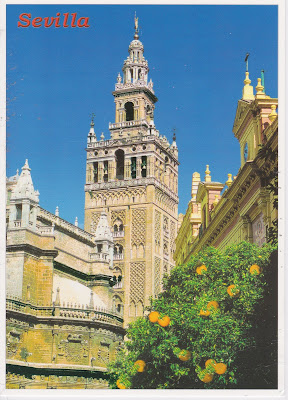Costa Blanca, Alicante/Alacant, Spain
The Costa Blanca or White Coast spans over 120 miles or 200 kilometers along the Mediterranean in the Alicante province, southeastern coast of Spain. The warm, sunny weather and white sandy beaches make it a popular tourist destination.
Villajoyosa, Spain
We visited two beaches on the Costa Blanca, one at Villajoyosa a little north of Alicante where we were able to meet with another cousin who lives in Norway but spends several months in Spain. I did not expect to ever meet her in person since she lives on an island in northern Norway and it did not seem likely that I would go that far north. However, here we are, three, second cousins on the beach in Spain! The beach at Villajoyosa is also a long sandy beach like the one shown on the card.
Three cousins meet in Spain
We also visited Torrevieja, south of Alicante, where the shoreline is rocky and there did not seem to be as much of a sandy beach. Instead there was a long boardwalk and a stone walkway that had steps and a ramp down into the water. It was windy the day we visited and there were waves crashing onto the rocks, even so we saw some people surfing there.
Torrevieja, Spain
For more information, see: https://en.wikipedia.org/wiki/Costa_Blanca
















